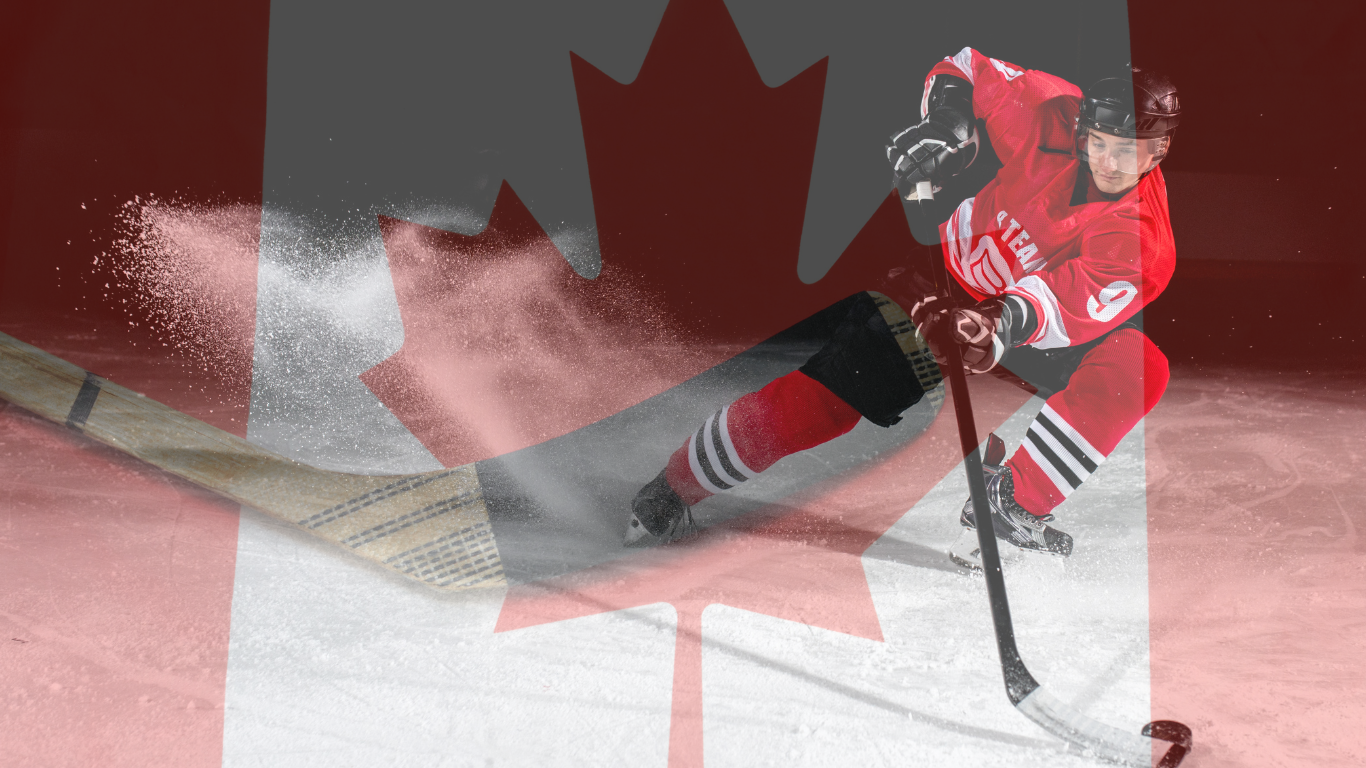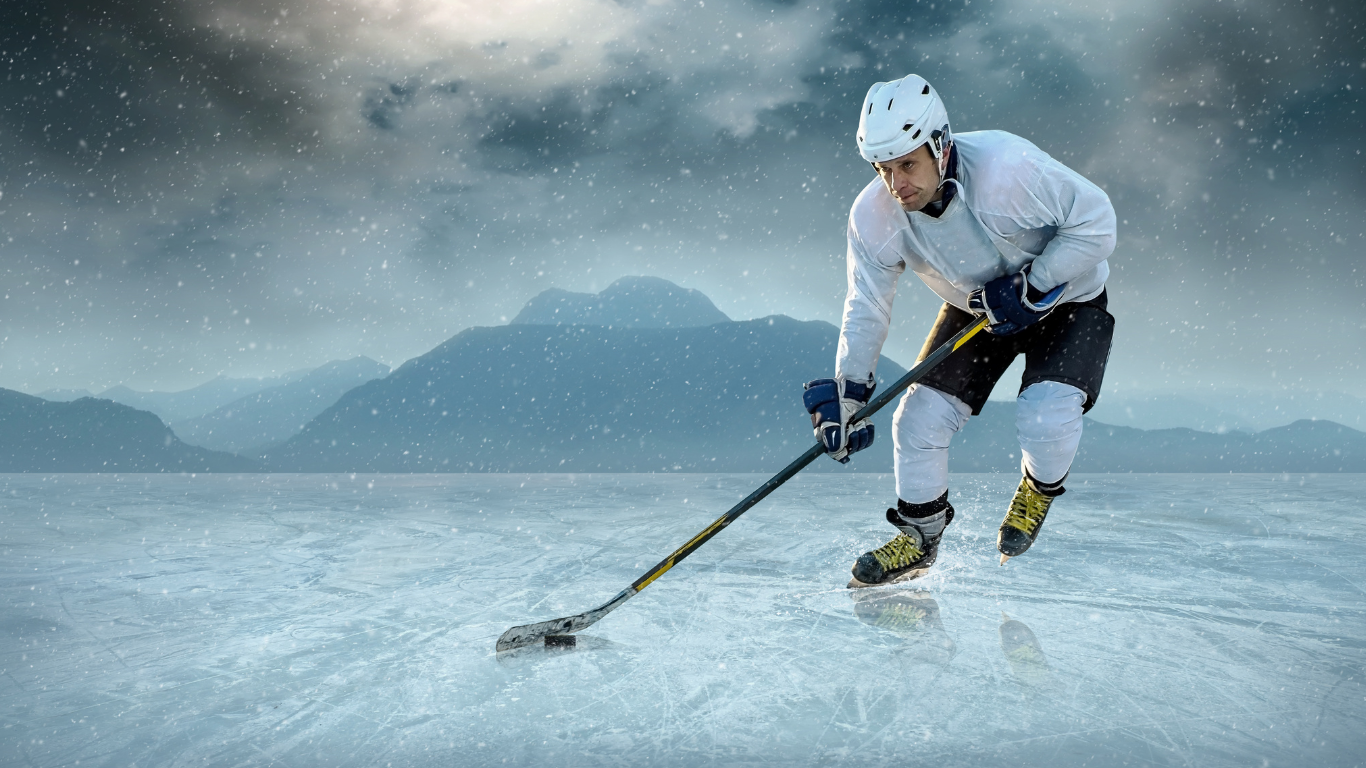I have always been a fan of hockey and hockey rinks, but for the longest time, I never understood what was beneath the ice. How could a rink produce such a near-perfect sheet of ice year-round, even in the hottest states? As it turns out, there is a lot more going on beneath the surface than meets the eye.
Underneath the ice, hockey rinks use a complex multi-layer system of:
- Refrigerated concrete
- Heating and insulation
- Sand and gravel
- Water drainage.
By spraying thin sheets of water onto temperature-controlled concrete, rinks build paper-thin layers of ice into full skating surfaces that they maintain in perpetuity.
With the miracle of modern refrigeration on a large scale, hockey rinks are able to stay frozen year-round. As complicated as it sounds, it is pretty straightforward. Let’s take a look at what lies beneath the surface and figure out what keeps the ice of a hockey rink in top condition.
Refrigerated Concrete Keeps the Ice Frozen
If I were to take an ice auger and drill to the bottom of a hockey rink, I would eventually hit a slab of refrigerated concrete. As I kept drilling, I would then find a series of pipes inside the concrete pumping freezing-cold liquid to keep the skating surface frozen.
Now, you may be asking how this is possible since water would just freeze inside the pipes. The trick is a salty solution called brine. Thanks to high salinity, brine has a lower freezing temperature than water. Rinks can pump cold brine through the pipes to keep the concrete slab at a freezing temperature.
What Stops the Ground from Freezing?
Logically, your next question might just be “what stops the ground from freezing beneath the ice?” This makes sense. If the ground were to freeze beneath the ice, it would contract, causing the skating surface to cave in. Rest assured, this is where the next layer comes in.
If I ditched my ice auger for a proper drill and continued to bore deeper into the rink, I would then find a layer of insulation followed by a layer of heated concrete. And, as counterintuitive as it may seem, heated concrete beneath a hockey rink is essential for success.
Toggling the temperature of a heated concrete layer has the added benefit of:
- Preventing the ground below from freezing
- Regulating how thick or thin the skating surface is
- Preventing the brine temperature from dropping too low
Without a heated slab of concrete, ice rinks would struggle to maintain their near-perfect surface.

What if the Skating Surface Defrosts?
Considering that a typical hockey rink uses over 10,000 gallons of water to create a skating surface, it is no small task to defrost a hockey rink. Nonetheless, many high-profile hockey rinks double up as basketball courts in the offseason. How is this possible, you ask?
At the base of a hockey rink, engineers add a final layer of sand and gravel that feeds into a groundwater drainage system. When it is time to say goodbye to a hockey rink for the season, they simply turn up the temperature of the brine and let the rink slowly melt away until the next year.
Over two or three days, thousands of gallons of water drain out from the rink and back into the ground. Builders then remove the glass boundaries that line the rink and begin to lay sheets of plywood on top of the remaining concrete slab.
Depending on who is building the court, builders can completely transform a defrosted rink into a basketball court within a matter of hours. To flip back, they simply remove the plywood and begin spraying thin sheets of water back onto the refrigerated concrete. After three or four days, the ice slowly builds up into a full skating surface again.
Decals and Details Come Somewhere in the Middle
Just like basketball courts, hockey rinks are known for their iconic center-rink logos. Therefore, when I found out that rinks are often transformed into basketball courts, I was left wondering how they recreate the same logo year after year. The trick is painting the ice halfway through freezing.
Once a new sheet of ice has been built to a reasonable thickness, rinks then paint the entire skating surface in white paint to create the standard hockey rink appearance. After the white paint dries, they then add red and blue paint to demark the different zones.
When everything is finished, rinks then paint their iconic logos into center-rink before slowly spraying on the second half of ice. Thanks to ionized water, the ice dries completely clear, allowing fans in the stadiums to see the logos perfectly.
Don’t Forget the Great Zamboni
No hockey rink would be complete without a Zamboni. If you are unfamiliar, a Zamboni is a large truck-like vehicle that drives around the ice to smooth out a fresh and smooth surface. But don’t sell these machines short; they do more than just scraping the ice.
While it is true that a Zamboni scrapes the ice clean using a large blade, if it only scraped away a damaged surface, the rink would eventually be left without any ice. The secret to a Zamboni’s success is a water sprayer that leaves a thin layer of moisture in its trail.
The front end scrapes away any imperfections in the ice and the water sprayer in the back guarantees that more ice will build to take its place. Within just a few minutes, the warm water dispensed by a Zamboni freezes into skateable ice, leaving the rink with a new near-perfect surface.
Conclusion
On closer inspection, hockey rinks are more complex than they appear. Using a series of concrete layers for heating and cooling, hockey rinks can control a refrigerated surface for as long as they want. When it is time to drain the rink, they simply heat the ice, drain it, and turn it into whatever new surface they want. Thanks to modern miracles, we can now skate whenever we want.




